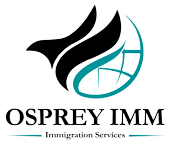About Express Entery
In January 2015, the Canadian government launched a new electronic immigration system that offers express entry to Canada for skilled and qualified immigrants.
The new Express Entry program will manage applications for permanent residence for immigrants who can fill jobs where there is a lack of available skilled Canadian workers. (View LMIA information for a related topic as well.)
The Express Entry program will also allow individual provinces and territories to use the system in order to recruit suitable candidates as part of the Provincial Nominee Programs so that labour market demands are met.
Employers will play a key part in selecting economic immigrants, and will be able to access suitable candidates via Canada’s recently improved Job Bank, as well as the relevant provinces and territories where applicable.

How to Qualify for Express Entry
How Express Entry Works
Step 1
Candidates who are eligible for the Express Entry Canada program can complete an online profile which will include various details about themselves, including their skills, their language ability, education and previous work experience, among others. Candidates who successfully meet the criteria of one or more of the federal economic immigration programs under Express Entry will then be sorted into a pool of eligible individuals. These individuals will be ranked according to their chances of economic success, and the highest ranking candidates, along with those who have qualifying offers of employment or provincial/territorial nominations (who will automatically receive high rankings), will receive a formal invitation to apply for permanent residency.
This way of doing things will allow Canada to pick the best possible candidates who are likely to go on to achieve success, rather than simply picking whoever is next in line. Candidates who do not have a valid job offer or provincial/territorial nomination must sign up to the Government’s of Canada’s Job Bank, so that he or she can be connected to relevant Canadian employers. Eligible employers will need to obtain a Labour Market Impact Assessment via Employment and Social Development Canada for permanent residence applications. There is no guarantee that candidates who fill out an Express Entry profile will be invited to apply for permanent residence, as this will mainly be determined by their ranking and the other factors mentioned above (offer of employment, provincial/territorial nomination).
Step 2
Those ranking highly in the pool (based on skills, experience, eligible job offers and relevant nominations where applicable) will then be invited to apply for permanent residency through an ITA (Invitation to Apply), and will have a total of 60 days to submit their electronic application. Electronic applications will be required to be submitted through one of the below programs: Federal Skilled Worker Program (FSWP) Federal Skilled Trades Program (FSTP) Canadian Experience Class (CEC) Provincial Nominee Program (PNP) Most applications will be pushed through swiftly by CIC, with many expected to be completed within six months.
Candidates who have applied for the Express Entry Canada program but who are not invited to apply for permanent residency after a year may then resubmit their profile and re-enter the pool, provided they are still eligible for the program. This is to prevent backlogs and allow for quicker processing and turnaround times. According to CIC, the Express Entry program will allow faster and more efficient immigration services to skilled immigrants. The program will also enable the Canadian Government to respond faster to Canada’s evolving economic conditions and changing priorities, and will increase flexibility.
Step 3
Receiving an ITA (Invitation to Apply)
After you have successfully filling out an Express Entry Form to be eligible in a Express Entry pool, foreigners will wait to receive an ITA. Each draw whether it is through a PNP or Express Entry will have a minimum CRS score and those with a ranking CRS score higher than the published one, will receive an invitation. Once one has received an ITA, there is a 60 day period where you must apply and submit all the required supporting documents to become a permanent resident. There are documents and following steps after recieving an invitation to apply including a chance to deny the ITA.
Receiving an AOR (Acknowledgement of Receipt)
Once the IRCC has received your PR application, you will receive an Acknowledgment of Receipt also known as an AOR. This AOR is a confirmation that your application file has been created. You may also be referred to an “AOR date” which is the date from when your 6 months intended processing time begins.

What is Express Entry Eligibility? Am I Eligible?
Determining whether you can apply under the Express Entry System can be confusing, but here are some of the basics.
According to Citizenship and Immigration Canada (CIC), Express Entry is a system put in place to “manage applications for permanent residence under these federal economic immigration programs.” These economic immigration programs include the Federal Skilled Workers Program, the Federal Skilled Trades Program, and the Canada Experience Class.
Requirements for eligibility vary depending on the class you wish to apply under, though for all programs you must be legally admissible to Canada and be intending to live in a province or territory other than Quebec. Candidates also have to achieve a minimum score on the Comprehensive Ranking System. Points can be scored based on age, education, language ability, certifications, and Canadian and non-Canadian work experience.
Here are some of the major requirements for each of the three economic programs
Federal skilled Worker Program
As CIC explains, if you’re hoping to become a permanent resident through the Federal Skilled Workers Program, you must first meet the minimum requirements for work experience, language ability, and education.
Work experience must be a year of full-time or equivalent part-time paid work in the same job within the last 10 years, and the job must be of skill type 0 or skill levels A or B of the 2011 National Occupational Classification. The language requirements include proof of Canadian Language Benchmark 7 in the form of CIC-approved language test results from within the last two years. For education, applicants need either a Canadian secondary (high school) or post-secondary certificate, diploma or degree, or a completed foreign credential and an assessment of that credential from a CIC-approved agency that shows that the completed education is equivalent to a comparable Canadian credential. Applications are also assessed based on federal skilled worker points. CIC will assign points based on the following factors:
Furthermore, applicants need to be able to prove that they have sufficient funds to support themselves and their family, unless they can already legally work in or have a valid job offer from an employer in Canada.
Federal skilled trade worker:
According to Citizenship and Immigration Canada, skilled workers for the Federal Skilled Trades Program must fulfill minimum work experience and language ability requirements.
Work experience must include at least two years of full-time work experience (or equivalent part-time work experience) within the last five years in a skilled trade. Applicants must also show that they have experience performing the duties for an eligible skilled trade outlined by the National Occupation Classification (NOC) in Major Group 72, 72, 82, or 92, or Minor Group 632 or 633.
Language ability scores can be lower than those for the skilled workers program: Canadian Language Benchmark 5 for speaking and listening, and Canadian Language Benchmark 4 for reading and writing. Satisfactory results from a CIC-approved language test are also required.
Applicants must also have either an offer of full-time employment for a full year minimum or be certified in their skilled trade by a Canadian provincial or territorial authority. Individual provinces /territories have specific requirements regarding trades qualifications and the process for assessment, so finding out how the program works in the province/territory where you wish to live is important.
Canadian experience class :
To be eligible under the Canada Experience Class, CEC specifies that you must meet the minimum work experience and language ability requirements.
Minimum work experience is 12 months of skilled work experience (or equivalent part-time) in Canada, with the proper authorisation, within the three years prior to applying for CEC. This work must fit the requirements of the National Occupation Classification for one of the following: managerial jobs (NOC skill level 0), professional jobs (NOC skill type A), or technical jobs and skilled trades (NOC skill type B). The applicant must also be able to demonstrate that their work experience includes having fulfilled the duties detailed by the NOC.
Minimum language levels are Canadian Language Benchmark 7 for NOC 0 or A jobs or Canadian Language Benchmark 5 for NOC B jobs, with results proven by a CIC-approved language test.
What is "Proof of Funds"?
You must be able to have the required amount above readily available for you. This means that you can not use equity on real estate or borrow money from another person. If your spouse is coming with you, you can count money you have together in a joint account. For proof, you must get official letters from any banks or financial institutions where you’re keeping money.
Letter(s) must

